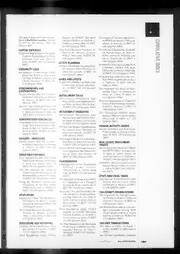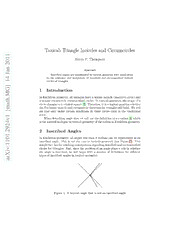
Preview Taxicab Triangle Incircles and Circumcircles
Taxicab Triangle Incircles and Circumcircles 1 1 Kevin P. Thompson 0 2 n Abstract a J Inscribedanglesareinvestigatedintaxicabgeometrywithapplication 4 to the existence and uniqueness of inscribed and circumscribed taxicab 1 circles of triangles. ] G 1 Introduction M . InEuclideangeometry,alltriangleshaveauniqueincircle(inscribedcircle)and h aunique circumcircle(cirumscribedcircle). Intaxicabgeometry,the shape ofa t a circlechangestoarotatedsquare[2]. Therefore,itisalogicalquestionwhether m theEuclideanincircleandcircumcircletheoremsfortrianglesstillhold. Wewill [ see that only under certain conditions do these circles exist in the traditional 1 sense. v Whendescribinganglesizeswewillusethedefinitionofat-radian[4]which 4 isthenaturalanalogueintaxicabgeometryoftheradianinEuclideangeometry. 2 9 2 2 Inscribed Angles . 1 0 In Euclidean geometry, all angles less than π radians can be represented as an 1 inscribed angle. This is not the case in taxicab geometry (see Figure 1). This 1 simplefacthasfarreachingconsequencesregardinginscribedandcircumscribed : v circles for triangles. And, since the position of an angle plays a role in whether i X the angle is inscribed, we will begin with a number of definitions for different types of inscribed angles in taxicab geometry. r a Figure 1: A taxicab angle that is not an inscribed angle Figure 2: Inscribed taxicab angles. The angles shown are a) strictly positively inscribed, b) completely inscribed, and c) strictly negatively inscribed Definition 2.1 Ataxicabangleispositivelyinscribedifalineofslope1through its vertex remains outside the angle. Definition 2.2 A taxicab angle is negatively inscribed if a line of slope -1 through its vertex remains outside the angle. Definition 2.3 A taxicab angle is inscribed if it is positively inscribed, nega- tively inscribed, or both. Definition 2.4 A taxicab angle is completely inscribed if it is both positively inscribed and negatively inscribed. Definition 2.5 A taxicab angle is strictly positively inscribed if it is positively inscribed but not negatively inscribed. Similarly, a taxicab angle is strictly neg- atively inscribed if it is negatively inscribed but not positively inscribed. From the examples in Figure 2 it is clear that both the size of an angle and its position affect whether it is inscribed. Some angles just larger than 2 t-radians are not inscribed while other angles just smaller than 4 t-radians are inscribed. Whilenotthefocusofthisinvestigation,itshouldbenotedthattheinscribed angle theorem from Euclidean geometry does not hold in taxicab geometry. Figure 3 illustrates two scenarios where the ratio of the inscribed angle to the central angle subtended by the same arc is different. In the left figure, α has measure 1 t-radian and θ has measure 2 t-radians. In the right figure, α again has measure 1 t-radian but θ has measure 2.5 t-radians. Triangleswithoneormoreinscribedangleshavespecialproperties. Anum- ber of these will be neededin our investigationoftaxicabtrianglecircumcircles and incircles. Theorem 2.6 If a triangle contains a strictly positively inscribed angle, then the other angles are negatively inscribed. 2 Figure 3: Failure of the Euclideaninscribed angle theorem in taxicabgeometry Proof: If an angle α of a triangle is strictly positively inscribed, then for a neighboring angle to not be negatively inscribed it would have to be larger than (4−α) t-radians (see Figure 4) thus violating the angle requirements of a triangle in taxicab geometry (Theorem 14 of [4]). 2 Corollary 2.7 If a triangle contains a strictly negatively inscribed angle, then the other angles are positively inscribed. Atrianglewithacompletelyinscribedanglecanonlytakeoncertainshapes and positions. Adding additional completely inscribed angles results in a very small class of triangles as the following theorem ilustrates. Theorem 2.8 A triangle has three completely inscribed angles if and only if two of its sides have slope -1 or slope 1. Proof: Suppose α and β are completely inscribed angles at vertices A and B of a triangle. Without loss of generality, suppose α is inscribed such that AB and AC have slope between -1 and 1 with AB having a slope strictly less Figure 4: The neighboring angles of a strictly positively inscribed angle of a triangle must be negatively inscribed 3 Figure 5: Defining a triangle with three completely inscribed angles than 1 (Figure 5). Since β is also completely inscribed, the slope of BC is between-1and1,inclusive. Ifthe slopeofBC isstrictlylessthan1,thenthere exists a line of slope 1 through C passing through the angle γ making it not positivelyinscribed. Similarly,iftheslopeofAC isstrictlygreaterthan-1,then there exists a line of slope -1 through C passing through the angle γ making it not negativelyinscribed. Therefore,the triangle has three completely inscribed angles if and only if the rays of angle γ have slope 1 and -1. 2 3 Inscribed Triangles Triangleswhoseanglesareallinscribedwill be ofgreatinterestto us. Havinga term for this type of triangle will be useful and, in the end, meaningful. While it may seem presumptuous, calling such a triangle an inscribed triangle will be fully justified by the results that follow. Definition 3.1 A triangle is inscribed if all of its angles are inscribed. Exploring some properties of inscribed triangles will aid in our study of taxicab triangle circumcircles and incircles. There are minimal properties that an inscribed triangle must have. In fact, by imposing the restriction that all threeanglesmustbeinscribed,amorestringentconditionresults. Thefollowing theorem illustrates one of the more fundamental and useful properties of an inscribed triangle. Theorem 3.2 Aninscribed trianglehas at least onecompletely inscribed angle. Proof: Bywayofcontradictionandwithoutlossofgenerality,assumeatrian- gle has a strictly positively inscribed angle α. By Theorem 2.6 the neighboring angles must be negatively inscribed. Suppose one of these angles β is strictly negativelyinscribed. ThenbyCorollary2.7,theotheranglesmustbepositively inscribed. So, γ is completely inscribed (Figure 6). Therefore, an inscribed triangle cannot be constructed with no completely inscribed angles. 2 4 Figure 6: An inscribed triangle must have at least one completely inscribed angle The following theorem is an extension and generalization of Theorem 2.6 where a hint of alternating inscribed angle properties among the angles of a triangle was seen. Theorem 3.2 above provides the flexibility in obtaining the following result. The alternating property in an inscribed triangle is key to the construction of taxicab circumcircles for triangles. Theorem 3.3 Neighboring angles of an inscribed triangle have opposite in- scribed angle properties (completely inscribed angles may be selected to be either positively or negatively inscribed as needed). Proof: Ifanangleofatriangleisstrictlypositivelyinscribed,thenbyTheorem 2.6theotheranglesarenegativelyinscribed. ByTheorem3.2oneoftheseangles must be completely inscribed. Therefore, neighboring angles in this triangle have opposite inscribed angle properties. The result is similar when beginning with a strictly negatively inscribed angle. The only remaining case is a trianglewith only completely inscribed angles. The result follows immediately. 2 4 Taxicab Triangle Circumcircles The traditional definition of a triangle circumcircle, or circumscribed circle, is a circle that passes through the vertex points of the triangle. In Euclidean geometry, all triangles have a unique circumcircle. In taxicab geometry, the existence of circumcircles is more restrictive. Theorem 4.1 (Triangle Circumcircle Theorem) A triangle has a taxicab circumcircle if and only if it is an inscribed triangle. Proof: If a taxicab circumcircle passes through the vertices of a triangle and completely encloses the triangle, by definition the angles of the triangle are inscribed since a taxicab circle is composed of lines of slope 1 and -1. 5 Figure 7: Construction of the taxicab circumcircle of an inscribed triangle To prove the converse, suppose the triangle is an inscribed triangle. By Theorem 3.3 neighboring angles of the triangle have opposite inscribed angle properties. Therefore, we may select three lines of slope 1 or -1 through the vertices of the triangle in an alternating fashion to construct three sides of a taxicab circle around the triangle. Since at least one angle of the triangle is completely inscribed, this can be done in multiple ways. At the completely inscribed angle, a line should be selected that maximizes the side of the circle enclosedbythe3lines(thesolidlinesofFigure7,withthedottedlinesshowing the alternate choice). By construction, the fourth side of the taxicab circle will enclose the triangle. 2 TheTriangleCircumcircleTheoremjustifiesournameforinscribedtriangles. This type of triangle is precisely the kind for which circumscribed circles exist. From this result, we can easily obtain the taxicab version of the Euclidean geometry“3pointsdefineauniquecircle”theorempreviouslyinvestigatedfrom other perspectives in [1, 5]. In particular, the concepts of inscribed angles and triangles are intimately connected with the gradual, steep, and separator lines of the main theorem of [1]. Corollary 4.2 (Three-point Circle Theorem) Three non-collinear points lie on a unique taxicab circle if and only if the triangle they form is inscribed. As noted by Sowell [3], taxicab triangle circumcircles are not necessarily unique. All non-unique cases occur when one or more sides of the circumcircle pass through two vertices. This often creates flexibility in defining possible circumcircles. Three cases are shown in Figure 8. In the first example, exactly onesidehasaslopeof1or-1andtheothersidesareofequaltaxicablengthand longer than the first side (noting that the triangle does not necessarily need to be acute). In this case a circumcirclecan be shifted diagonally within a limited range around the triangle. For the second example, one side has slope 1 or -1 andanother side is parallelto anaxis. Largerandlargercircles encompass this 6 Figure 8: Triangles with infinite circumcircles type of triangle. These circles also encompass the third example along with another set of circles in a limited range of movement as in the first example. In this case the triangle is isoceles (but not equilateral) with two sides having slope 1 or -1. 5 Taxicab Triangle Incircles The traditional definition of a triangle incircle is the largest circle inscribed within the triangle that is tangent to all three sides of the triangle. Such a circle is guaranteed to exist in Euclidean geometry. As with circumcircles, a taxicab triangle incircle only exists under certain conditions. We begin by for- malizing the definition of an incircle in taxicab geometry to clear up concepts like “tangent” which may not transfer precisely. Definition 5.1 Ataxicabtriangleincircle,orinscribedcircle, isataxicabcircle entirely contained in a triangle with three of its corners touching the sides of the triangle. Theorem 5.2 (Triangle Incircle Theorem)A triangle has a uniquetaxicab incircle if and only if it is an inscribed triangle. Proof: Let△ABC be aninscribedtriangle. By Theorem3.2,the trianglehas at least one completely inscribed angle. Without loss of generality, let γ be an inscribed angle in the triangle at vertex C such that AC and BC have slope between-1and1,inclusive(Figure9). Ifthetrianglehasthreeinscribedangles, chooseγ to be the angleat the intersectionof the lines with slope 1 and-1 (see Theorem 2.8). For the side AB of the triangle opposite γ, consider a point P with distance from B α·AB r = β α+β 7 Figure 9: Construction of the taxicab incircle of an inscribed triangle The distance from A to P is β·AB r =AB−r = α β α+β The arcs of taxicabcircles of radius r and r centered onA and B, respec- α β tively, intersect AB at the same point P and by the arc length Theorem 6 of [4] both have a length across the interior of the triangle of α·β·AB l=r ·α=r ·β = α β α+β Therefore,thesearcsformhalfataxicabcircleinsidethetriangle. Theother half of the taxicab circle remains inside the triangle because the slope of the lines forming the circle are by assumption greater than the slopes of the lines forming the side of the triangle they intersect. Toprovetheconverse,assumeatrianglehasataxicabincircle. Ifoneorzero sides of the circle overlapthe triangle (as in Figure 9), both sides of each angle of the triangle are intersected by a line of slope -1 or 1. This implies a line of thesameslopepassingthroughthevertexwillremainoutsidethe anglemaking eachangle inscribed. If two sides of the circle overlapthe triangle,the enclosed angle is by definition completely inscribed. The other two angles are inscribed by the argument above. Therefore, the triangle is an inscribed triangle. 2 For a triangle that is not inscribed, an inscribed taxicab circle still exists in a sense, as noted in passing by Sowell [3]. The enclosed circle technically fails tobe anincircleby ourdefinitionbecause itdoesnottouchsomeofthe sidesof the triangle (see Figure 10). The problem centers on the fact that the triangle is significantly “wider”than it is “tall”and taxicab circles are in a sense not as “flexible” as Euclidean circles. 6 Conclusion While taxicab incircles and circumcircles exist for some taxicab triangles, their existence is not guaranteed. The size and position of the angles of the triangle affecttheexistenceofsuchcircleswiththeconceptofinscribedanglesbeingthe 8 Figure 10: A taxicab circle within a triangle that is not inscribed defining characteristic. The inscribed angles requirement is perhaps present in other geometries such as Euclidean geometry, but it may not be as well noted in cases where all angles are inscribed. References [1] C¸olakogˇlu, H. Baris and Ru¨stem Kaya, A synthetic approach to the taxicab circles, Applied Sciences, Vol. 9 (2007), pp. 67-77. [2] Krause, Eugene F. “Taxicab Geometry: An Adventure in Non-Euclidean Geometry”, Dover, New York, 1986. [3] Sowell,Katye,O.Taxicab Geometry - A New Slant,MathematicsMagazine, Vol. 62, No. 4 (Oct 1989), pp. 238-248. [4] Thompson,Kevin andTevianDray. Taxicab Angles and Trigonometry, The Pi Mu Epsilon Journal, Vol. 11, No. 2 (Spring 2000), pp. 87-96. [5] Tian, S.; S. So; and G. Chen, Concerning circles in taxicab geometry, J. Math. Edu. Sci. Technol. Vol. 28 (1997), Issue 5, pp. 727-733. 9
The list of books you might like

As Good as Dead

The Sweetest Oblivion (Made Book 1)

Rich Dad Poor Dad

Haunting Adeline
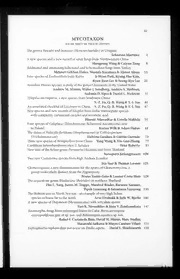
Mycotaxon 2006: Vol 96 Table of Contents

Ocio humanista: dimensiones y manifestaciones actuales del ocio
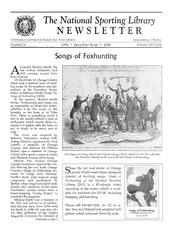
NSLM Newsletter - Winter 2006

ES 4755: GENERAL REQUIREMENTS FOR SAFETY OF LAMP CONTROL GEAR
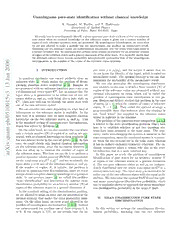
Unambiguous pure state identification without classical knowledge

CHRIST AND ANTICHRIST - WordPress.com - Get a Free Blog Here

Death in Summer

The Brooklyn Paper Volume 32 Issue 05

Bon Dia Aruba (23 Januari 2006)
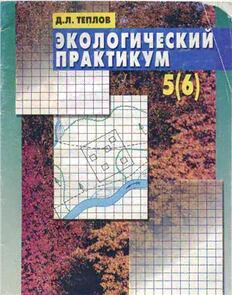
Экологический практикум. 5(6) класс

Kluftinger: Kriminalroman (Kluftinger-Krimis 10) (German Edition)

Stefania ayangannae
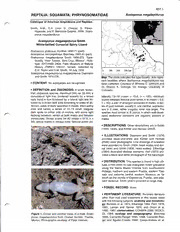
Sceloporus megalepidurus

Mice Other Poems by Gerald Bullett
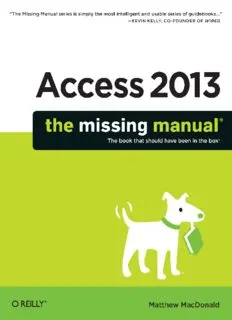
Access 2013: The Missing Manual

C anton (©bsferVitr
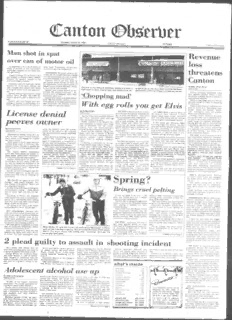
C anton O bsierber

